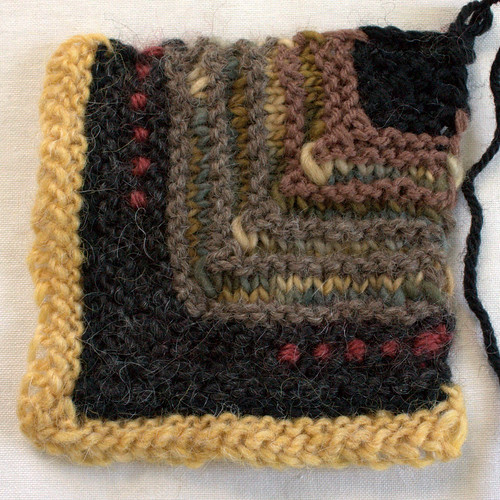
I have been helping a friend landscape the backyard of a condo this week. Around the complex grow ornamental cherries, and wherever there are ripening berries I will inevitably hear the the soft seeee of my favourite bird. Cedar waxwings have been milling around in numbers. They are not a shy bird, and when they happen to descend from the treetops will permit a human observer to approach for a closer look at their handsome plumage. The sight or sound of cedar waxwings always brings me close to tears.
One afternoon at the cottage in late July the summer I was 16, Mom and I noticed the cat pawing at something on the ground. We interrupted her and found two blind, featherless nestlings on the ground. One was dead, the other so weak it could barely open its beak. We had heard squirrels causing a ruckus in the high canopy earlier that day, and this was certainly their doing. The nest was too high for us to replace the foundling and the parents were nowhere around. We took it indoors, expecting it to die, but we fed it catfood and water and it seemed to gather a little strength. We set a kerosene lamp near its basket for warmth.
Next morning we were awakened by a call like a loud cricket from the kitchen. Our visitor had survived the night and was very hungry. Yellow pin feathers began emerging from its rump, confirming our suspicion it was a cedar waxwing. We began mixing fruit with the catfood. Before long the baby was strong enough to jump on the edge of his basket. If you offered him a finger he would hop there, too.
So began our long and delightful relationship with Bandit, named for his distintive mask and clever, mischievous manner. I published a fuller story of his life on Suite101 in 2000 as "Masked bandit on the wing" (part 1, part 2 and part 3). Besides being stunningly handsome (see his portrait here), he was gregarious, affectionate, temperamental, feisty, valiant, graceful and kind as a bird can be. Waxwings are highly social birds, and we were his society. He would sleep on my shoulder while I did my homework, or hop under my desk lamp, spread his wings and take a heat bath.
But one of his most endearing habits was to dance (like this) when someone offered him one of his favourite foods. He would softly whistle, cock his head, raise his crest, hop back and forth on the table or your arm, and try to hand the delicacy back to you. Waxwings do this when they are courting, but also socially. When a small flock lands on a branch near a source of food, the closest bird will pick a berry or a petal and pass it down the row so every individual has a chance to eat.
It was hard to describe the sleek, fine-textured, subtle olive-brown plumage of a cedar waxwing in yarn, but the variegated Malabrigo gives an impressionist approximation. You can roughly determine a bird's age by the number of red wax tips on each grey wing; although Bandit did not have one for each of his 14 years by the time he died, he had more than any wild bird I have seen.
I still like to imagine that cedar waxwings are messengers from beyond the veil that separates our world from eternity and dreams. Whenever they appear, I stop and pay attention.


No comments:
Post a Comment